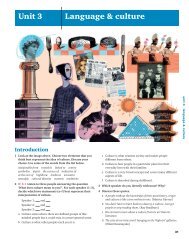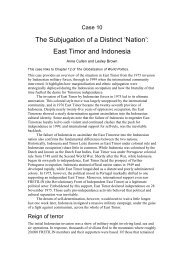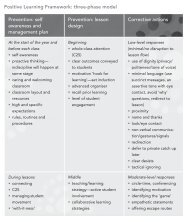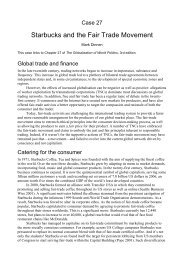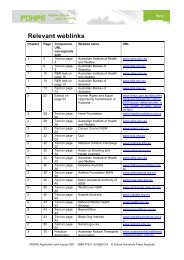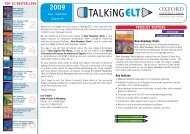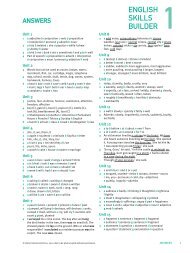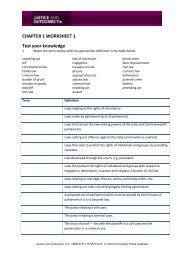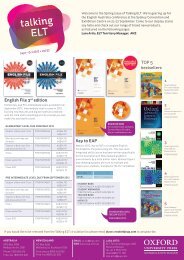2 Chapter 6 ⢠organising elements Organising elements
2 Chapter 6 ⢠organising elements Organising elements
2 Chapter 6 ⢠organising elements Organising elements
Create successful ePaper yourself
Turn your PDF publications into a flip-book with our unique Google optimized e-Paper software.
6.1<br />
4<br />
Why do we organise <strong>elements</strong>?<br />
Every day we use materials that have been selected because of their properties. Most<br />
materials are compounds made of different combinations of the 88 naturally occurring<br />
<strong>elements</strong> chemically bonded together into definite arrangements. Although each of the<br />
<strong>elements</strong> is different to all the others, there are patterns and trends in their properties.<br />
The periodic table is a way of displaying the <strong>elements</strong> in a pattern with similar <strong>elements</strong><br />
placed near each other. A chemists reads and interprets the periodic table like an<br />
architect reads a plan or a town planner reads a map.<br />
<br />
Memory tricks<br />
Have you ever been presented with a large number of<br />
objects, facts or events to remember? How did you go<br />
about it? Teachers experience this challenge every year<br />
when new classes are assigned to them and they need to<br />
remember all your names!<br />
• Work in small groups to test some of your methods.<br />
Groups may choose to work with pictures, words or<br />
objects that they have gathered. Numbers greater than<br />
10 will work best. Methods to consider include the<br />
use of mnemonics, pairing or grouping the items into<br />
smaller, more manageable ‘chunks’ or finding a pattern<br />
that fits the entire set of items.<br />
• Plan and conduct trials for several methods, analysing<br />
and evaluating each to decide on the most effective.<br />
Once complete, consider how this task may be related<br />
to the various systems for naming and/or grouping<br />
things in science.<br />
1 What <strong>organising</strong> systems have you already<br />
encountered?<br />
2 It has probably been a couple of years since you<br />
studied biological classification, but how did Linnaeus<br />
affect the way scientists classify living things?<br />
3 How may a similar system assist chemists?<br />
<strong>Chapter</strong> 7 • using chemistry<br />
group 1:<br />
group 2:<br />
light<br />
pinkgroup 3:<br />
garden<br />
Getting <strong>elements</strong><br />
organised<br />
The periodic table is a strange shape. It’s not<br />
square or even rectangular, and there’s a gap<br />
across the first couple of rows. Lower down there<br />
are ‘missing’ chunks and two lines of <strong>elements</strong> are<br />
written below the table, completely detached.<br />
The story of how scientists organised <strong>elements</strong><br />
goes back a long way, but the story of the periodic<br />
table itself is relatively short. Scientists have<br />
been trying to get their heads around matter for<br />
thousands of years. Like anything, until a certain<br />
level of understanding is reached, the pieces of<br />
the jigsaw puzzle remain in a bit of chaos. As<br />
soon as some evidence is uncovered, more detail<br />
can be worked out and this can result in the<br />
process of discovery moving much faster.<br />
group 4:<br />
summer<br />
UNCORRECTED PAGE PROOFS<br />
CAS_SB10_TXT_06_1pp.indd 4<br />
11/11/11 4:58 PM





